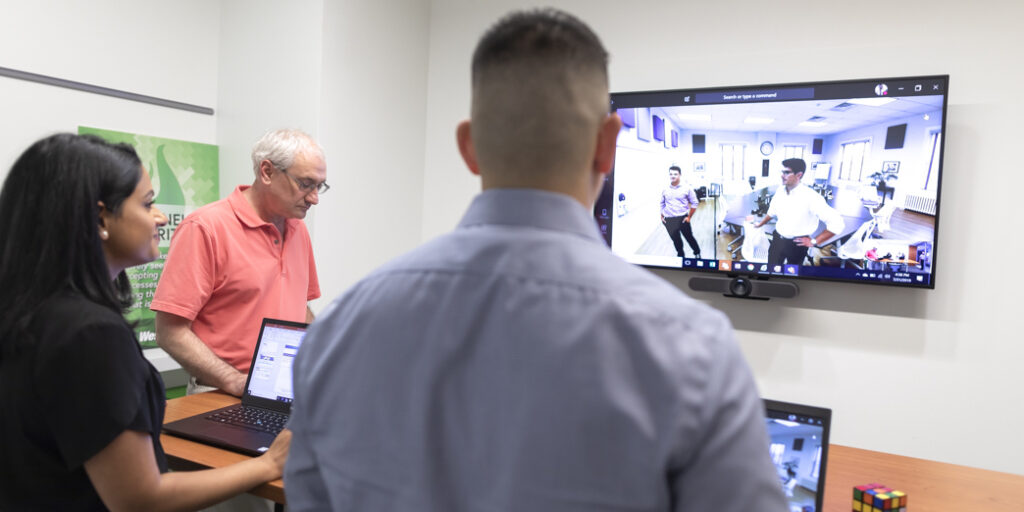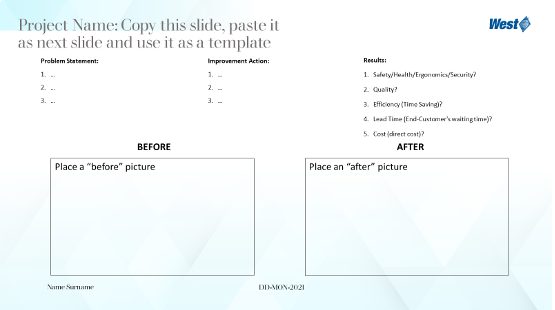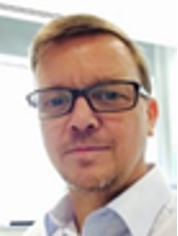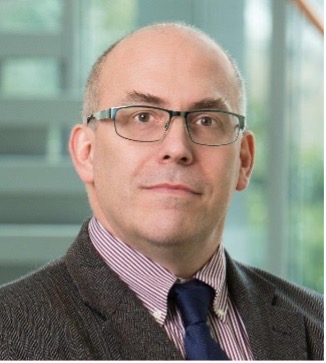Cultivating CI in a digital work environment
Jan 14, 2022

FEATURE – This global designer and manufacturer has leveraged a remote kaizen initiative to keep the flame of continuous improvement burning during the Covid-19 pandemic.
Words: Christos G. Chatzopoulos Ph.D., Christophe Gonet and Simon P. Winn, West Pharmaceutical Services
For the past two years, the Covid-19 pandemic and the ensuing restrictions have disrupted everyone’s personal and professional lives. We have all found ourselves facing a new reality requiring digital teamwork and remote cooperation at levels never imagined before. This has presented challenges for everyone, even for an organization like West Pharmaceutical Services, Inc. (West), a company with over 95 years of designing and manufacturing experience.
West started its continuous improvement journey on the shop floor 15 years ago. As a result of the pandemic, we realized we needed to extend the reach of our transformation to administration business processes, starting from the Global Sales Operations. After analyzing all the available options, we eventually came up with the idea of launching a digital Individual Kaizen program focusing on Lean Administration.
The program consisted of two phases. The first phase focused on people development, with organized weekly training sprints for each training topic, while the second focused on continuous improvement, the accomplishment of daily Kaizen, and the presentation of the improvement during a short weekly Yokoten meeting. (Actually, we introduced two weekly meetings, to accommodate different time zones since our participants were located across North America, Europe, and the Asia-Pacific region.) A program guideline and a list of goals were communicated upfront to ensure the standardization of work and quality of the program.
The mission was to continue to develop our people, cultivate continuous improvement, and improve team morale in our new remote and digitally enabled work environment. We relied on online training materials, virtual lean coaching, and collective Yokoten meetings.
THE PROGRAM
The first phase was organized in training sprints, each covering specific lean administration topics, such as types of waste, 5S in both traditional and digital office environments, quality, daily management, and standard work. Each sprint was adapted to participants’ availability, time capacity, and training needs. The training’s modular format allowed for great flexibility to meet the participants’ and the organization’s needs. The participants were grouped into teams of four to six members, typically based to their time zone. Each group attended seven sprints, each focusing on a specific topic and running for one week. Every week, the participants would go through the online training, carried out three individual kaizens for each topic, and presented them to their lean coach, who provided guidance during 1-on-1 remote sessions. The goal was to prepare the participants for the next phase.
The second phase refers to the ongoing expectation to complete individual kaizens daily and present one of them in the weekly Yokoten program meeting. Each kaizen was communicated on one slide with a standard template. All slides were posted on the “Wall of Fame”, a digital presentation deck located in a shared location all participants had access to. The standard template slide had three column sections – Problem Statement, Improvement Action, and Results on Program Values – with bulleted points under each section (see below). It also included two sections covering the before and after, with visual proofs of the implemented change, such as pictures, screenshots, charts, and other data. Coaching was provided daily and adapted to each case or individual need. The goal was to share lessons learned, both successes (and how to replicate them) and failures (and how to prevent them).

THE OUTCOME
In eight months, 26 team members from North America, Europe, and Asia Pacific carried out more than 300 individual Kaizens. As the program unfolded, we noticed a marked improvement in the daily business and in customer satisfaction. The recognition of potential errors to be prevented, the speeding up of processes, and the improvement of team morale drove excellence in West’s administrative function.
Here are 10 examples of kaizens:
- We improved time zone barriers by setting up three time zones in the MS Outlook Calendar to visually know the exact time of different locations. This enabled team members to easily arrange meetings, calls, digital events, and remote collaboration sessions at a time appropriate for all locations. Attendees no longer had to propose different times, our visual management got better, and there was no longer any time wasted searching for time zone conversions.
- We reduced the time to go through inboxes by setting up rules for incoming and outgoing emails to automatically sort Inbox and Sent Items in MS Outlook according to user’s needs. This was an example of the poka-yoke mechanism, which automatically performs digital 5S and leverages visual management for error prevention.
- We improved productivity and data quality assurance by leveraging the Apps built into MS Teams.
- We changed specific settings in MS Teams to avoid common mistakes in remote collaboration, presentation, screen, and audio sharing.
- We standardized globally the MS Excel spreadsheets we use for daily standard work, improving team efficiency and ensuring quality through more poka-yoke mechanisms.
- We limited the waste of motion in retrieving digital files and folders and further prevented file error or duplication. We did this by decluttering digital files and folders and applying digital 5S on local computers, cloud storage, and other document storage systems.
- We improved our CRM’s graphical environment and consequently the User Experience by promoting visual management, employing advanced technical features, and updating best practices for users as part of standard work and data quality.
- We simplified and improved digital documents with a focus on proofing and read-time efficiency.
- We applied 5S in physical workspaces in the office environment, reducing the waste of motion for work desk and drawers, improving workplace ergonomics, and ensuring safety.
- We improved the way we organize paper-based documents and management tools, white board lists, mind maps, and memos by implementing visual management and standard work in the physical office environment.
Through direct observation and questionnaires, both part of a Voice of the Business (VOB) exercise, we learned that almost all participants found the initiative useful, the kaizens of others interesting and that they would recommend other team members to participate in the program.
Lean Thinking enabled individuals to improve their daily work and productivity by applying their learnings and knowledge on a daily basis, thus fostering continuous improvement.
What made the program a success was that it was built on the basic elements of a continuous improvement culture. It thrived on West’s safe and blame-free environment, where humility and curiosity are encouraged and respect for people – seen as, among other things, the nurture of everyone’s potential – is at the heart of our culture.
We understand that kaizen can only result from observation at the gemba, where value is generated. No defect or problem is too small to correct, and no improvement is too small to make.
It’s worth mentioning that the program did not provide any specific reward, aside from the intrinsic motivation stemming from working in an environment that promotes:
- Autonomy – people can “self-manage” and are free to choose the improvements and how to implement them.
- Mastery – we helped people to become better professional, more engaged and committed to improving.
- Purpose – people understood that they are part of something bigger, that they share a common target with others: continuously improving the day-to-day business to delight customers.
It’s been wonderful to see the amazing results the team has gotten. We’d like to congratulate program participants on a job well done, and thank all Global Sales Operations associates as well as the Operational Excellence Global Team.
We are still working from home, and we’ll see what Covid-19 has in store for us all. But, no matter what the pandemic throws at us, we are determined to continue our journey and build on what we have already achieved. With that in mind, we asked program participants to advance their future kaizens from individual to team kaizens – or even kaizen events and projects. They can even submit their initiatives to West’ corporate Kaizen Award Ceremony, for knowledge sharing and accreditation purposes.
THE AUTHORS

Christos G. Chatzopoulos, Ph.D. is Commercial Process Excellence Senior Specialist at West Pharmaceutical Services

Christophe Gonet is Sales Performance Management & Asia Pacific Sales Operations Director at West Pharmaceutical Services

Simon Winn is Global Sales Operations Senior Director at West Pharmaceutical Services
Original Article: https://planet-lean.com/lean-west-pharmaceutical/
Stay In Touch.
Subscribe to our newsletter and exclusive Leadership content.
We respect your privacy and won’t spam your inbox
